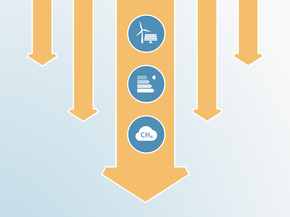Assumptions
Historical emissions
Greenhouse gas emission inventories for 1990-2018 are based on the National Inventory Report 2020 submitted to the UNFCCC (Government of Norway, 2020a). Emissions for 2019 are calculated based on growth rate between 2018 and 2019, which comes from Statistics Norway (Statistics Norway, 2020) and is applied to emissions in 2018.
NDC and other targets
The Copenhagen pledge, as well as NDC and long-term target were calculated from the most recent national inventory submissions (Government of Norway, 2020a).
The Norway Climate Act established the target of 80-95% reductions below 1990 levels by 2050 (Ministry of Climate and Environment, 2017) and in 2019 the government announced it will increase this target to 90-95% (Government of Norway, 2019).
Current policy projections
The pre-COVID current policy projections are based on Norway's submission to the European Environment Agency (European Environment Agency, 2019).
COVID-19 impact
We applied a novel method to estimate the COVID-19 related dip in greenhouse gas emissions in 2020 and the deployment through to 2030. The uncertainty surrounding the severity and length of the pandemic creates a new level of uncertainty for current and future greenhouse gas emissions. We first update the current policy projections using most recent projections, prepared before the pandemic. We then distil the emission intensity (GHG emissions/GDP) from this pre-pandemic scenario and apply to it the most recent GDP projections that take into account the effect of the pandemic.
We used GDP projections from the OECD and Statistics Norway. The OECD Double Hit scenario, which projects a GDP decrease of 7.5% in 2020 and increase by 1.3% in 2021 was used to create the lower bound of our current policy projections, while the Statistics Norway projection of a 2.9% decrease in 2020 and a 4.3% increase in 2021 was used to create the upper bound (OECD, 2020a; Statistics Norway, 2020). GDP projections from the IMF and the OECD Single Hit Scenario were also considered, but fall within this range and as a result were not incorporated into our analysis (IMF, 2020; OECD, 2020b).
We derived GDP estimates for the years 2022 to 2030 from the growth rates in the original pre-pandemic current policy scenario.
Further analysis
Latest publications
Stay informed
Subscribe to our newsletter




